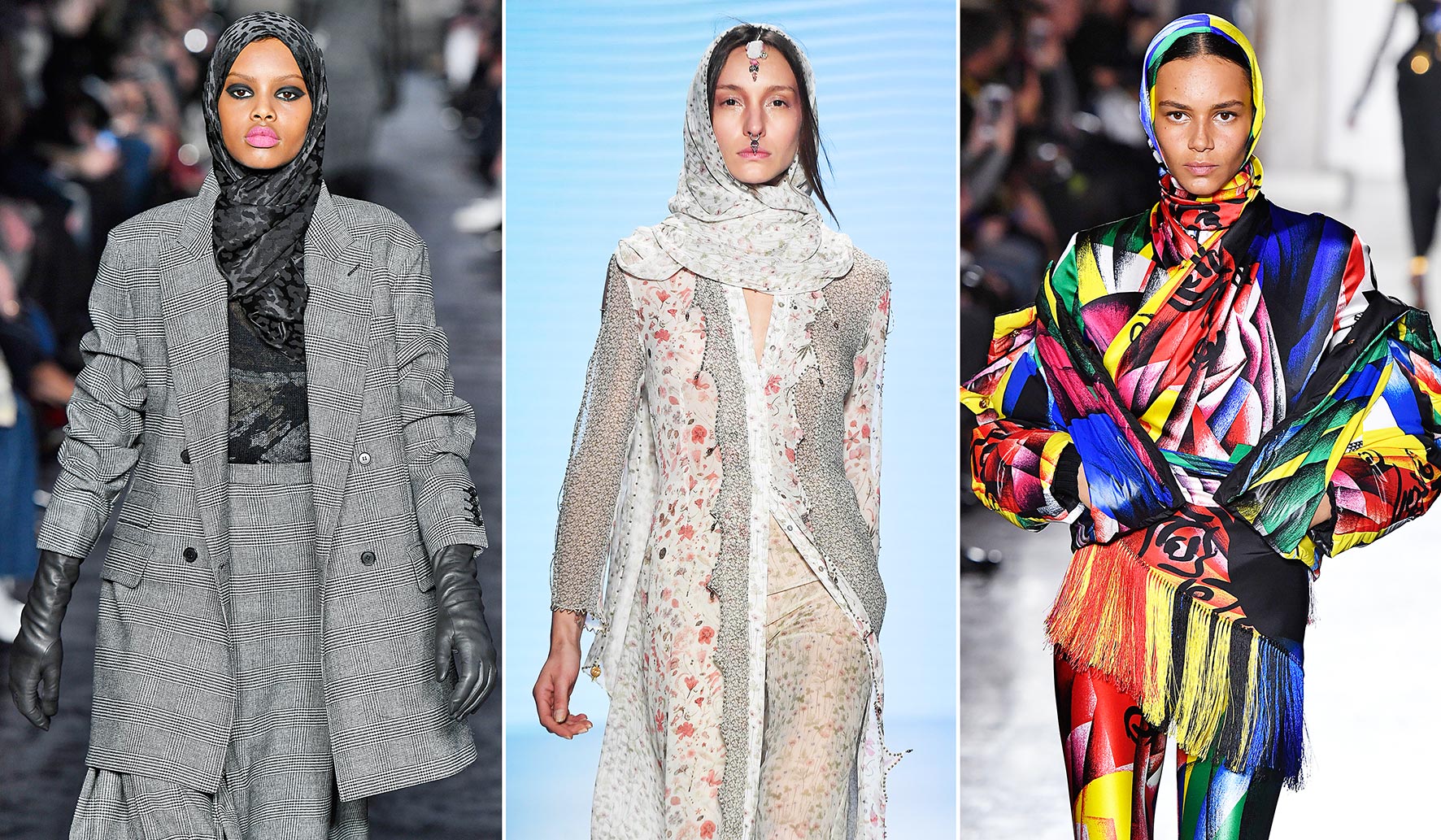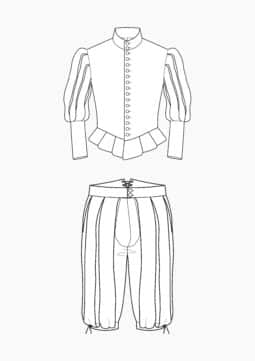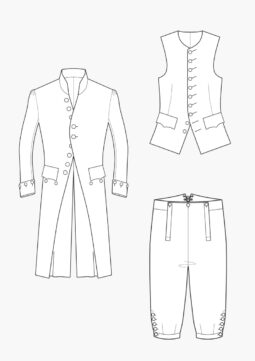Clothing in Islam – From headscarves to burqas
Deutsch

WHAT DO MUSLIM WOMEN WEAR?
Insight into different types of clothing of Islamic countries
In the Arab world, especially in public, women appear in the most different layers of fabric – which, from a western point of view, seems confusing at first glance. Depending on country and region, big city or province, the rules are often interpreted differently – sometimes more liberal, sometimes less so. In liberal Muslim countries, and in their metropolises in particular, it often is adequate to wear a loosely bound headscarf, which is chosen freely in color and pattern to complement the fashionable clothing. At the same time it is expected from the women to dress not too physically accentuated and to show skin as little as possible. In many countries, such as the Arabian Peninsula, a variety of wrapped garments appear next to each other and characterize the street scene. The strictest regulations apply in Afghanistan and parts of Pakistan: Here, the female population has to fully cover up. Women wear face veils, a so called burka, to not even to let their eyes show. Islamic scholar are arguing persistently about, whether the Koran actually requires the veiling or merely demands “disciplined” clothes so women are “recognized as believers and not being harassed”. In the following we introduce some traditional garments worn in the Arab world.
This is an article from Damen-Rundschau 1-2.2017. In this issue you will find interesting articles about capes, pochos and throws, as well as portraits of the designer Khulood Thani and Josephine Gaede by Cape Girls.
DUPATTA
 (Photo Credit: Illustrationen (11): SUNY ROTH )
(Photo Credit: Illustrationen (11): SUNY ROTH )
Common in South Asia, the Dupatta is a long scarf that is draped loosely around face and shoulders. The wearer combines the Dupatta with matching long dresses or skirts.
SCHAILA

The Schaila is a rectangular, long veil, comes in different colors, and is worn so the whole face can be seen. The cloth is loosely wrapped around the head and held together by taking one end, crossing at center front and loosely place it over the second shoulder. This type of veiling is often seen in black in the Gulf States.
HIDSCHAB

The headscarf Hijab also belongs to the category of “loose” fitting Muslim headgear, however, in comparison to the Schaila it is tightly entwined under the chin. This way, hair, ears, neck and neckline are covered. The Hijab is the most widespread form of veiling amongst Muslim women and in the entire Islamic world, such as Tunisia and Saudi Arabia. Hijab allows fashionable freedom, because they are offered and available in numerous colors and designs. A Hijab can also be sewn in a way, that allows it to be draped so it becomes a Niqab – then only the eyes are left uncoverd.
AL-AMIRA

Unlike the Hijab. the Al-Amira is a two-piece garment. A cloth is worn tightly fitting around the head, a larger one loosely pulled over, the entire face remains free. This type of veiling resembles a short cape including the headgear. No room for creativity: in this design no looping or draping happens. The Al-Amira is common in Tunisia, Egypt, Turkey and in Iraq. Fashionable variations in design possible, for it may be worn in different colors.
CHIMAR

This coat-like veil can reach to the waist so the entire upper body is covered except for the face. The Chimar is combined with the Nigab if, in addition, the face should be hidden. The Chimar also is worn in various colors and patterns. This garment design is longer than an Al-Amira; since this coat-like veil loosely falls down from the top of the head to the ground, the shoulder part is hardly to imagine. Here also the woman can choose from different colors.
TSCHADOR

The Chador was created as a result of the Islamic revolution in Iran, when the veiling was ordered to the women. The Chador is especially widespread in Iran as well as in the entire Islamic world, for example in Pakistan or Egypt and the Arabian Peninsula with Saudi Arabia, Yemen, Oman, Kuwait, Qatar, the United States United Arab Emirates, Jordan, Iraq and Bahrain. This form of the full body veil consists of a mostly black cloak-like garment, that reaches to the ground and covers the entire body including the woman’s head. A silhouette can hardly be recognized here either; the face usually remains free. In the Chador a fabric panel is incorporated, which gives support and is used to safely hide the hairline. Translated, Chador means “Tent”. It is held together on the inside at center front by hand. Sometimes a second smaller veil is worn underneath.
NIQAB

The black Niqab goes back to an ancient tradition: It is borrowed from the Bedouin culture on the Arab Peninsula, where it still is worn today. In Saudi Arabia and Yemen for example, the vast majority of women wear this face veil, but also is common in Egypt, Syria, Jordan, Iraq, Pakistan and North African countries. countries. Already in pre-Islamic times women and men alike have worn clothes to protect from wind, sand and sunlight. These have been made from cotton grown in the Nishapur region and the gave the garment its name, today it is also can be made of silk or synthetic fiber. Often the face veil Niqab is confused with the Burka. In contrast to the Burka, the Niqab, however, allows a slit to leave the eyes free. In the more luxuriant variation jewelry is applied on the headband above the eyes. To eat or drink, the wearer lifts the veil and enjoys the desired. The Niqab is often combined with a floor-length black robe, mostly to a Chador or an Abaya, which covers arms and legs.
BUSHIYA

This face veil is semi-transparent and worn like a Chador or Abaya. Common on the Arabic Peninsula.
BURKA

This most extreme veiling of the woman is common in Afghanistan and parts of Pakistan: The most discussed, mostly blue full body veil covers the woman completely from head to toe. Not even the eyes can be seen anymore. A band-like reinforcement around the top of the head prevents the fine mesh or net, applied at eye-level, from slipping. The wearer experiences a constricted viewing angle.
ABAYA

Optically the Abaya appears like a mixture of floor-length dress and coat. In Saudi Arabia, wearing this waistless dress in public is considered of being worn as the minimum of wrapping; in the Emirates also the basic color black is often chosen. The Abaya reaches from neck to toes. Designers of Muslim fashion offer the Abaya by now in numerous variants: in different colors, in butterfly cuts, from time to time even discreetly waisted or with prints.
BURKINI

A garment of the modern age. The Burkini – a combination of the words burka and bikini – should enable women to bathe even as strict Muslim believers This two-piece swimsuit covers the entire body and is offered in many different designs. Face, hands and feet of the Burkini wearer mostly remain uncovered.



